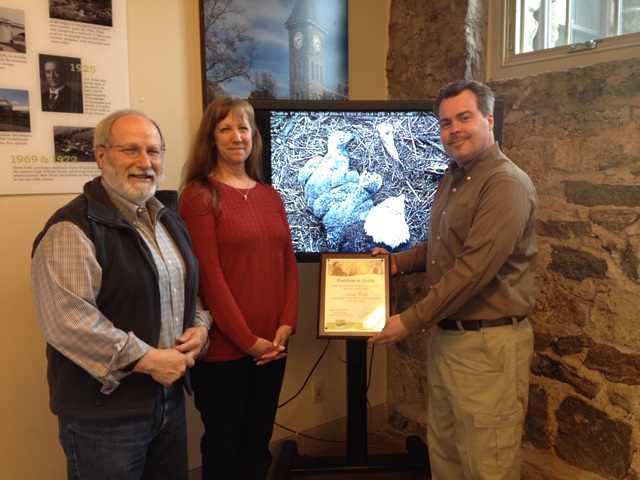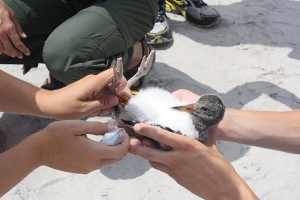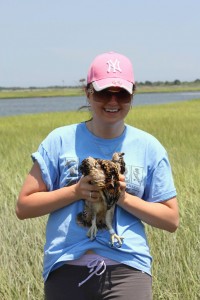Dedicated, Passionate Hunterdon County Computer Teacher Wins Statewide Wildlife Education Contest
Contest winner to help band EagleCam chicks at Duke Farms next month
By: Lindsay McNamara, Communications Coordinator

Copper Hill School computer teacher Diane Cook was recognized by Duke Farms and Conserve Wildlife Foundation for winning their EagleCam lesson plan contest earlier this week. Cook will join wildlife biologists to help band the new Duke Farms EagleCam chicks next month.
The EagleCam Lesson Plan contest, jointly organized by Duke Farms and Conserve Wildlife Foundation, called on educators to submit lesson plans incorporating the Duke Farms EagleCam into their classrooms. Installed in 2008, the Duke Farms EagleCam, a web cam on a tree adjacent to a Bald Eagle nest, has provided a streaming look into the daily lives of the eagle family for over 10 million viewers.
Diane Cook submitted three creative lesson plans for the contest and is working with the Duke Farms and Conserve Wildlife Foundation EagleCam team to expand the camera’s potential as an educational vehicle.
“Duke Farms is delighted to support dedicated teachers that bring nature to life in their classrooms. Diane Cook’s winning lesson plan featured innovative strategies to teach digital citizenship through student observations of the nesting eagles,” explained Michael Catania, Duke Farms Executive Director. “Her participation in this year’s banding of the Duke eagle chicks will be a highlight for our staff.”
The EagleCam has been a staple of Diane Cook’s classrooms since the webcam was installed in 2008. Cook began blogging about the eagles in 2011 and allows students in grades kindergarten through four to share their thoughts, observations or questions on what they see happening in her computer literacy class. Cook also live streams the EagleCam in her classroom for her students to watch. Her first graders use the webcam as a part of an internet safety unit and her third and fourth graders use the EagleCam to learn how to write blogs themselves.
“Watching the EagleCam gives us all, adults and students, the opportunity to experience nature happening right before our eyes. It opens the way for meaningful discussions and great questions, both at school and at home as families watch together,” said Computer Literacy Teacher and Contest Winner Diane Cook. “This year, I am using the EagleCam to teach how to write a thoughtful and meaningful comments in social media forums. Fourth graders are learning how to blog. They are excited to write about a topic that excites them.”
“As a dedicated and inspiring teacher, Diane Cook is helping us realize the incredible potential for connecting our kids with the natural world around us,” stated David Wheeler, Conserve Wildlife Foundation Executive Director. “The amazing comeback of Bald Eagles across New Jersey mirrors the recovery that our state has made from the devastating legacies of unchecked pollution. Teachers like Diane Cook work so hard to make sure the next generation of leaders understands first-hand how much all of us – humans and Bald Eagles alike – depend on a clean and healthy environment.”
Originally from Branchburg, New Jersey, Cook now resides in Ringoes. She has been an educator at Cooper Hill School in the Flemington Raritan School District for 19 years, teaching first grade, second grade and now computer literacy. Cook gets outside as often as she can, and she enjoys gardening, birding or looking for other wildlife, hiking, walking, fishing, and learning her newest craft of photography.
“I’m hoping to instill in all who learn about the EagleCam in my class a sense of wonder, appreciation for our natural world, and a desire to take care of our world,” explained Cook. “Environmental science is one of my passions. I want to pass along a small part of that to others.”
Lindsay McNamara is the Communications Coordinator for Conserve Wildlife Foundation of New Jersey.


